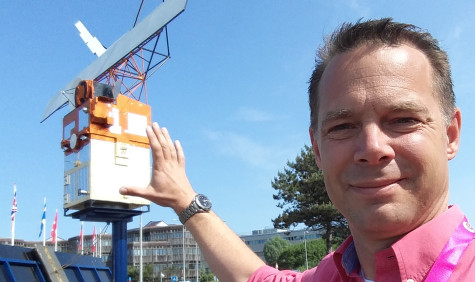Gelderland space project thrives on data sharing
The HAN University of Applied Sciences, Radboud University, Wageningen University & Research and various companies from the Gelderland region are working together on a satellite. This requires an intensive exchange of data between students, lecturers, researchers and external parties. For the storage and sharing of data they use Research Drive.
Sending a satellite the size of a milk carton into space 'under Gelderland's power'. That is the mission of the HAN University of Applied Sciences, Radboud University and Wageningen University & Research in cooperation with a number of companies from the region. The universities are responsible for the scientific experiments to take place in space, students from the HAN are building the satellite. They are looking into questions such as: how to ensure a data connection between space and earth? How do you keep the temperature of the satellite constant?
Research support
A nice division of roles, thinks Erik Folgering, head of operations at the Institute of Engineering in HAN's Faculty of Technology. And a collaboration that requires an intensive exchange of data between students, lecturers, researchers and external parties. Folgering says: "Looking for a platform for storing and sharing data, I independently contacted SURF. There it turned out that HAN was already more broadly engaged in SURF Research Drive. It was decided to use my project as a pilot to explore the possibilities of Research Drive."
HAN is in the process of a redesign in which working in the triangle of education, research and entrepreneurship is central. The university wants to bring more focus to the type of research taking place in Arnhem and Nijmegen. With these developments come new forms of support, because at the moment support is still somewhat fragmented. "By asking around, you usually find out who you need to contact," says Folgering. "What is nice about this project is that I am discovering bits of HAN that I did not yet know. As it turned out, I wasn't the only one with questions about data storage, for example. We are now learning together how to shape research support."
Reuse
Internally, the collection, processing and storage of data is fine, he thinks, but externally the university is still searching. "That is being thoroughly addressed, although I am not yet testing Research Drive to its limits. We mainly share student research reports." Part of the search is the question of how data can be stored in a consistent way for reuse. "We store everything neatly, but HAN changes systems from time to time. Research from the past has limited access and is not much reused for that reason. That is fortunately changing, but good facilities are needed for that."
The researchers estimate they will need another year and a half before the satellite is ready. Then it will have to wait for a spot on a rocket from ESA, the European Space Agency. The satellite is expected to be launched into space in 2022-2023.
